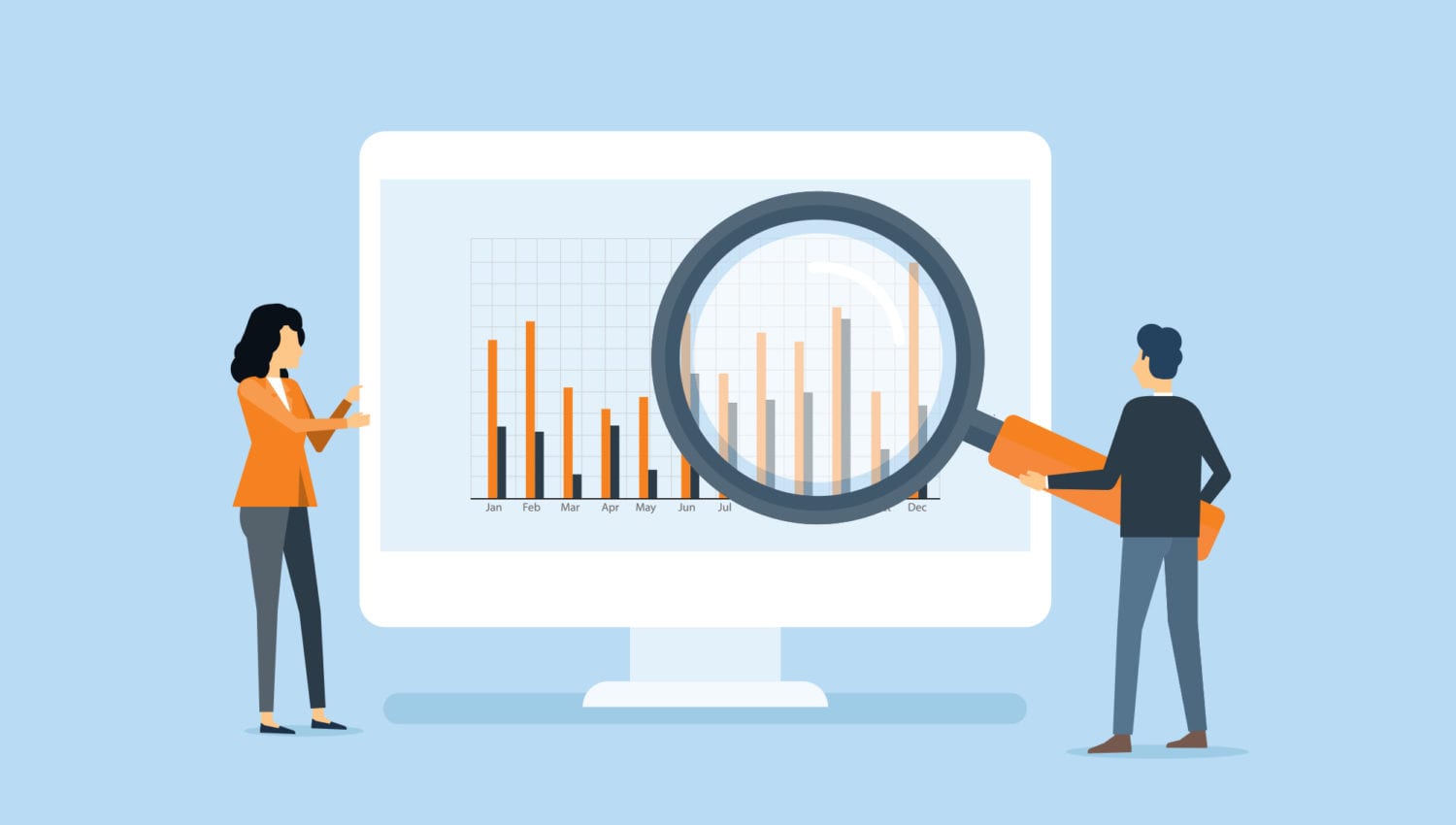Print, Design & Websites

Posted: June 13, 2017 • Posted in: Marketing Tips, Website Design
Your Google Analytics report explained
As part of your ongoing support, we’ll send you a Google Analytics report every month. A key indicator of how well your website is performing, the report highlights important information about your site and its visitors, such as their numbers, how long they spent viewing your pages and their preferred language.
With so much information at your fingertips, it can be hard to process the data it’s delivering. The report we supply covers the most basic measures and provides a useful overview of who visited your site, and the activity they undertook while there. But what does the information tell us, and what other issues should you be aware of?
Glossary of terms
First up, it’s important to understand what the key terms included in the report actually mean:
Sessions – The total number of visits to your site during the month.
*Note: If a user is inactive on the website for longer than 30 minutes (e.g. goes on a lunch break) before returning and opening a new page, then this second interaction is recorded as a new session.
Users – The total number of unique users who visited your site throughout the month. Each user can contribute to multiple sessions.
Page views – The total number of pages that were viewed during the month.
*Note: This includes repeated views of the same page in the same session.
Pages/Session – The average number of pages that are viewed during each single session (No. of page views/No. of Sessions). Again, repeated views of the same page are counted.
Avg. Session Duration – The average length of time spent on the site per session.
Bounce Rate – The percentage of sessions where a visitor views a single page on your site, and then leaves without viewing any other pages or taking any actions.
% New Sessions & New/Returning Visitors – The percentage of your visitors that are new (first-time visits) or returning (have previously visited the site).
Language/Session – Your users’ preferred language as configured on their web browser.
Interpreting the information
Now we know what the measures mean, it’s time to look at how we can interpret this data, and understand what it means about a website’s effectiveness.
Users and Sessions
At the top of your report, the line graph represents the number of sessions on your site by day. This can highlight trends, such as increases or decreases in activity over the weekend, and whether or not national holidays are popular. Comparisons with previous months can be useful, but be wary of variable data – such as the number of days in the month or what day of the week the month starts on – as this can distort results.
As the users metric shows how many unique visitors viewed your site in the month, this figure will invariably be lower than the total number of sessions, which counts multiple visits by the same person. Also, be aware that as this metric is determined by cookies, it can be slightly skewed if the same person views your site through a number of devices (such as laptop and smartphone). These will all be counted as unique visits, even though they are in fact by the same person.
Page Views
Knowing your total number of page views is useful, especially when divided by the total number of sessions in the pages/sessions metric. On a basic level, the more pages a visitor views per session, the more engaging your site is. It is important though to add some context to this, by looking at the average session duration measure. A high level of page views in a short session may suggest that the user tried, but failed to find the information they were seeking. In this instance, it may be advantageous to make navigating your site clearer and more user-friendly.
Conversely, a long average session duration and multiple page views per session would suggest that your users are engaged by your site’s content. Delve deeper into your online report to see which pages are particularly engaging, based on the time spent on them, and figure out why they’re more popular than other pages.
Bounce Rate
One of the most interesting metrics is that of bounce rate. Google considers bounce rate as a ranking factor in determining the perceived usefulness of the information on your site, so it’s worth paying attention to it! While a high bounce rate suggests people are not interacting with your site, it may well be worth digging a little deeper. For example, a one-page website will have nowhere to click through to, so will have a bounce rate of around 100%, even though your visitors may have easily found the information they were seeking.
It may also be worth considering the difference between new and returning visitors. While people who have previously visited your site may navigate directly to the page they’re interested in and then leave without visiting any other pages, a new customer who bounces may be more of a concern.
To decrease your bounce rate, ensure you have clear calls to action on all your pages, and add links to related content in your posts so that users have somewhere to click through to.
About your visitors
Comparing new vs returning visitors can show whether your marketing is working. A pay per click campaign aimed at new customers should show an increase in new visitors, for example. A balance of new and returning visitors is ideal. New visitors provide the opportunity to gain extra customers, while a high level of returning visitors suggests a loyalty towards your brand. Regularly updating content should entice visitors to return, and at the same time engage new viewers – offering opportunities to convert them into customers.
Finally, the language information is used to show what your users’ preferred language is. While it will usually be en-gb or en-us (British or American English), for global companies it may be interesting to see what language your site is viewed in. A list of the language codes can be viewed here: https://www.iso.org/iso-639-language-codes.html, with the second country code here: https://www.iso.org/iso-3166-country-codes.html
Need more help?
Google Analytics is an in-depth analytics tool, and the metrics discussed here are just the tip of what it can offer. Hopefully, this post has helped you decipher the most basic data, and provided an insight into the world of analytics. If you want to know more, please don’t hesitate to contact our Bury St Edmunds web team on 01284 752266 or email [email protected].
Read more: ‘Get your business on Google’ »
Read more: ‘We’ve recently expanded our team, and taken on a new copywriter!’ »
If you enjoyed this post, please share it with your Facebook and Twitter followers using the links below!




